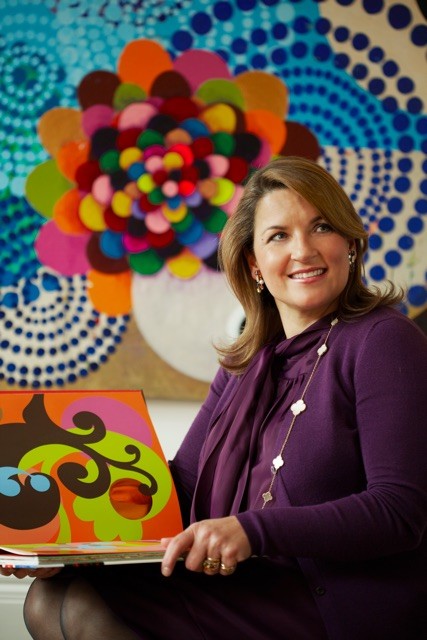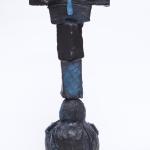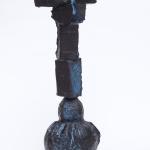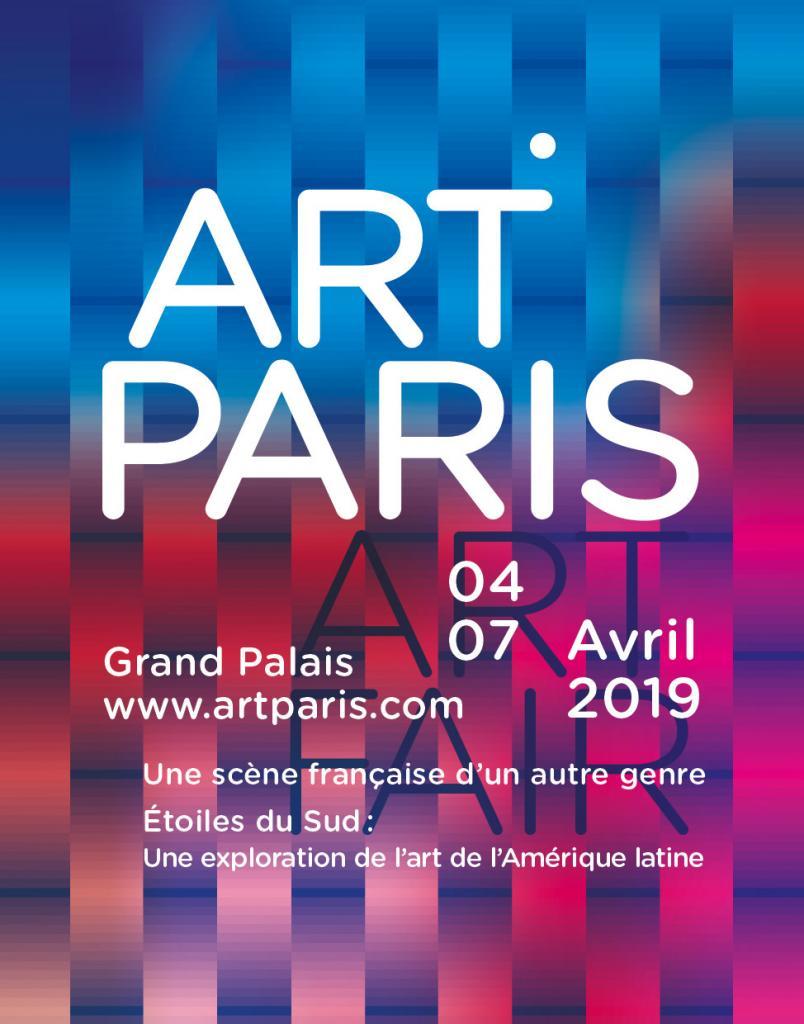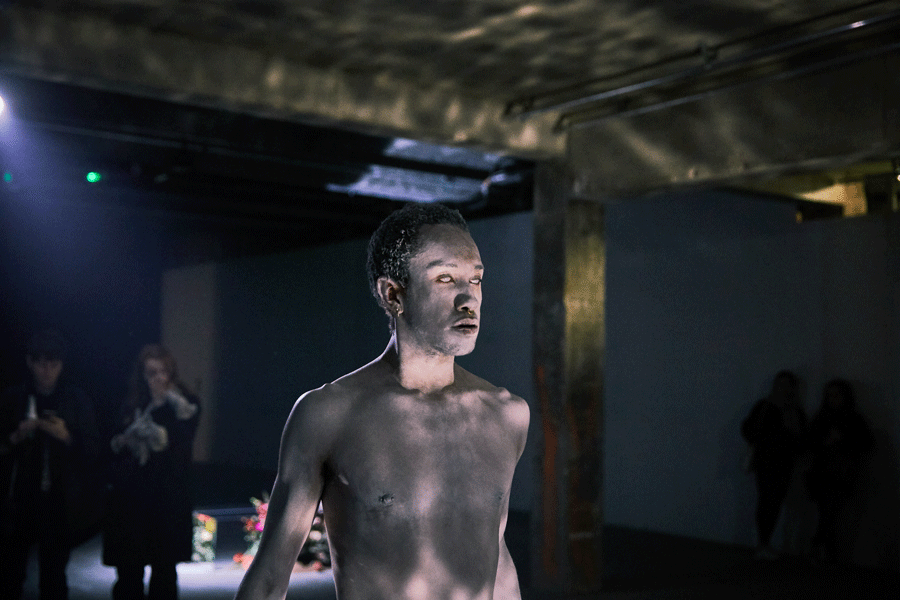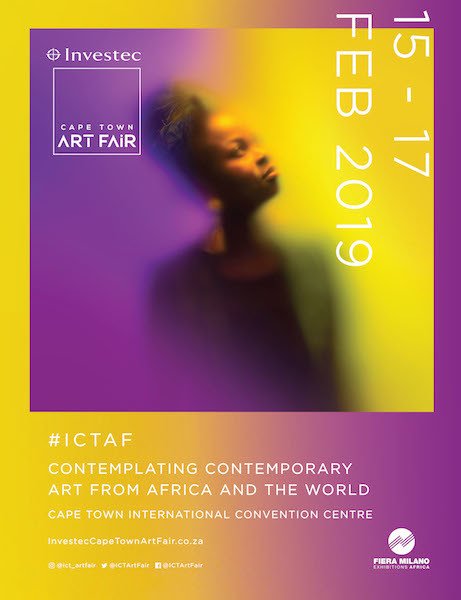Art Paris Art Fair highlights women artists from Latin America
04/04/2019 - 07/04/2019Where the sun burns the skin: the presence of women artists from Latin America at Art Paris Art Fair 2019, a reflection…
“ no son todas las que están, ni están todas las que son ”

Photocollage copy on photographic Endora Paper 21 x 20 cm (34 x 33 cm framed)
Courtesy Mendes Wood DM, Collection Catherine Petitgas
For its 2019 edition, Art Paris Art Fair presents “Southern Stars”, an exploration of Latin American art from 1960 to the present day, offering a historical and contemporary tour of the artistic production of this territory with its multiple tensions: artistic, political and existential.
This article is a reflection on the particularities of Latin American art made by women. From a historical, contemporary, social and commercial point of view. Discussions with Valentina Locatelli, curator, and Catherine Petitgas, collector, were essential for the development of this reflection.

Acrylic and oil stick on canvas 150 x 120 cm (C) Aurélien Mole
Courtesy Crèvecoeur, Collection Catherine Petitgas
Tupi or not tupi
To be, in Latin America, unfolds in two ways: on the one hand the definition of an essence and on the other hand, a changing state. This duality of the first verb brings a fluidity dear to the artistic production of this territory where the sun burns – sometimes – the skin. A tension between being and not being, between essence and body, suggestion and affirmation, between tupi or not tupi(1) ?
This sun that burns – sometimes – the skin, forces us to be in constant movement, to create life strategies, refuges. Encourages us – sometimes – to look elsewhere to build our own territory. Latin American women actively participated in the act of sculpting 20th century art. Conversely, some of these artists have been kept in the shadows. This is partly due to latent sexism, conservative ideas that are gaining ground and diluting slowly, but also because of a system that defines the quality of the work through the artist’s visibility and success.
Woman artist / Woman of artist
At the beginning of the century, some figures pushed their branches towards the light, such as Tarsila do Amaral, Anita Malfati and Frida Kahlo for the modernist avant-gardes. Lygia Clark for the neo-concretists. Lygia Pape and Ana Mendieta for various mediums. Continuously perceived, for some of them, as the woman of an artist and not as a woman artist.
These names now printed in art history books (some, not all – names, and books) synthesize a constellation of artists that deserved to be considered as stars and not as satellites around other stars.
In order to establish a link with today’s production, we exchanged with curator Valentina Locatelli, based in Switzerland and exhibition curator for “Etoiles du Sud”. Locatelli believes that “contemporary art plays an important role in the image we have abroad of Latin America. First of all from a discovery point of view, because the richness of the production is impressive and deserves to be seen”, but specifies that this is only a “portrait of 8 female artists”, referring to the parallel presentation of a selection from Catherine Petitgas’ collection, named “Amazones” and which presents the work of women from the countries of the Amazon basin, mainly Brazil (Beatriz Milhazes, Maria Nepomuceno, Rivane Neueunschwander, Lygia Clark, Anna Bella Geiger), Colombia (Liliana Angulo, Beatriz González, Nohemí Pérez), Peru (Sandra Gamarra, Ximena Garrido-Lecca), Venezuela (Lucia Pizzani and Sol Calero).

Place of speech
For Locatelli, curating an exhibition on the art scene in Latin America, being herself born and based in Europe, does not seem to him to be a barrier or create tensions at a time when questions related to the place of speech are becoming more and more present.“In my opinion, this will bring great richness for both sides; a very interesting dialogue between cultures. This will be an opportunity to broaden horizons and points of view. Especially since this selection was established “in constant consultation with artists and galleries”, says the curator.
Politeness of materials / Poetics of improvisation
Catherine Petitgas, collector, art historian and philanthropist, presents a selection from her collection in the exhibition called Amazons, as these 8 women on display share the fact that they come from countries in the Amazon region. For Petitgas, as the collection grows, the more crucial the research work becomes. “I work without a consultant. However, I find that to be a collector it is essential to be well informed, to know, to be aware. This research and reflection effort is therefore necessary”.
This relationship to a knowledge put into practice, active and sensitive, dialogues precisely with the particularities of the contemporary art scene in Latin America, according to the collector. The particularity of these angles of view (or attack?) transcends borders. First,“There is a resonance outside Latin America. We find megacities in America but also in Southeast Asia. This urban chaos, inequalities, exacerbated wealth, creates a particular art form,” Petitgas explains.
“An art form between Arte Povera and ready-made. There is a certain politeness towards the social context. A politeness resulting from the choice of materials. We are not going to create a golden work, it is not ethical”. This ability to find poetry in chaos is very present in Latin American production. The question of mood also finds its place in a pioneering way among these artists; would it be a strategy to sublimate difficult realities? To be voluntarily sonso, sneaky, phony, as the Brazilian writer Clarice Lispector suggests, would it be an escape from a latent violence of reality? Establish a poetics of the improviser, a manual for the use of the gambiarra(2) ?

Building or severing bonds?
The modern and contemporary Colombian scene is for Catherine Petitgas a case study. Plunged into an acute crisis and fractured from the interior, the country found common ground thanks in part to art. The artist Doris Salcedo, for example, offers a very powerful memory work. Beatriz Gonzales is also responsible for this great work of memory and (re)building relationships: “Art tells what history cannot,” the artist often says. A memory not necessarily connected to nostalgia, but closely linked to the present.
Today, having to present an exhibition focused on women so that women can be exposed is, to some extent, tragic. It would never seem, when referring to any exhibition, that these are “male artists from Brazil, China, Cameroon”. On the other hand, this today encourages us to take this tragic burning in our hands and move forward. It is necessary to expose the fractures of a system that is certainly reinventing itself. To create a close link between arte e vida. Where the sun burns the skin, where it is hot even in the shade…
*Special thanks: Catherine Petitgas, Valentina Locatelli, Talisson Melo, Rafaela Sales, Joao Vitor Maturana.
Art Paris Art Fair from 4th to 7th April 2019 – Grand Palais, Paris (France).
*For more information, please consult the following links:
→ Art Paris Art Fair 2019 – Between discovery and diversity
→ www.artparis.com
_____________________________
(1)Tupi or not Tupi, from the ” Manifeste Anthropophage “, published in 1928 by Oswald de Andrade. Tupi is the name of one of the tribes people living in Brazil before the arrival of the Portuguese.
(2) A word from Brazilian Portuguese that refers to an improvised solution put in place when trying to fix an object without all the necessary tools. Like using chewing gum to keep the frame of a painting straight.
_____________________________
To go further :
- Radical Women: Latin American Art, 1960-1985 – Cecilia Fajardo-Hill, Andrea Giunta (2017)
- Contemporary Art in Brazil – Hossein Amirsadeghi . Catherine Petitgas (2012)
- Contemporary Art in Colombia – Hossein Amirsadeghi . Catherine Petitgas (2016)
- Critica feminista en la teoria e historia del arte, genero y feminismo : perspectivas desde américa latina – Andrea giunta

